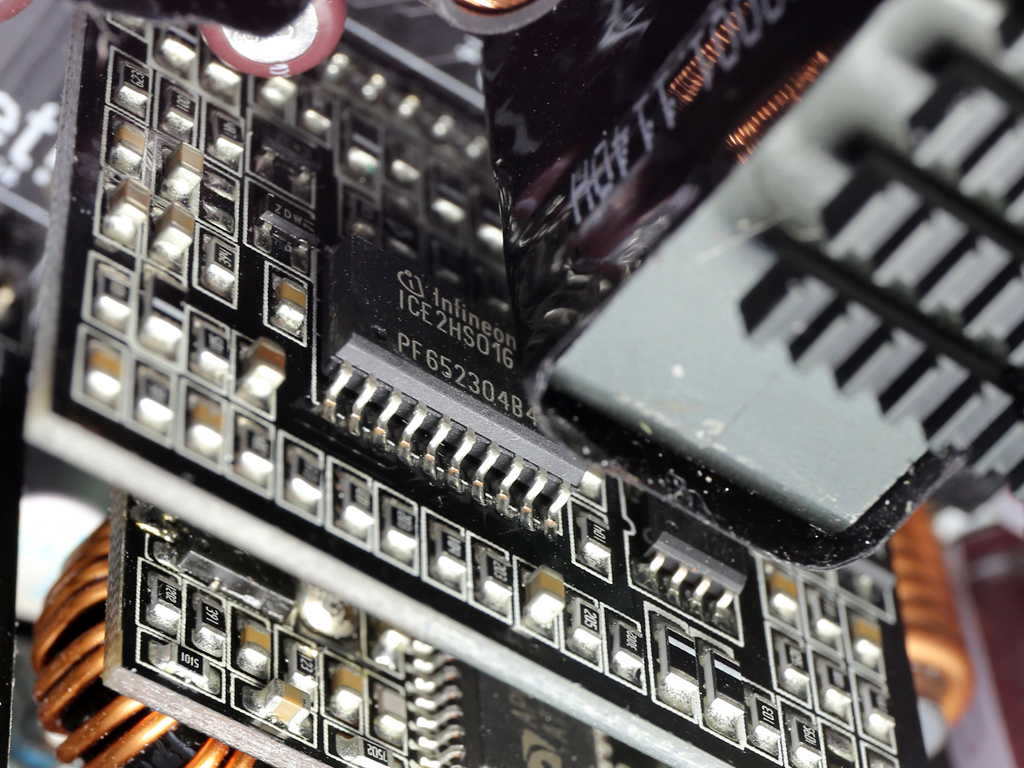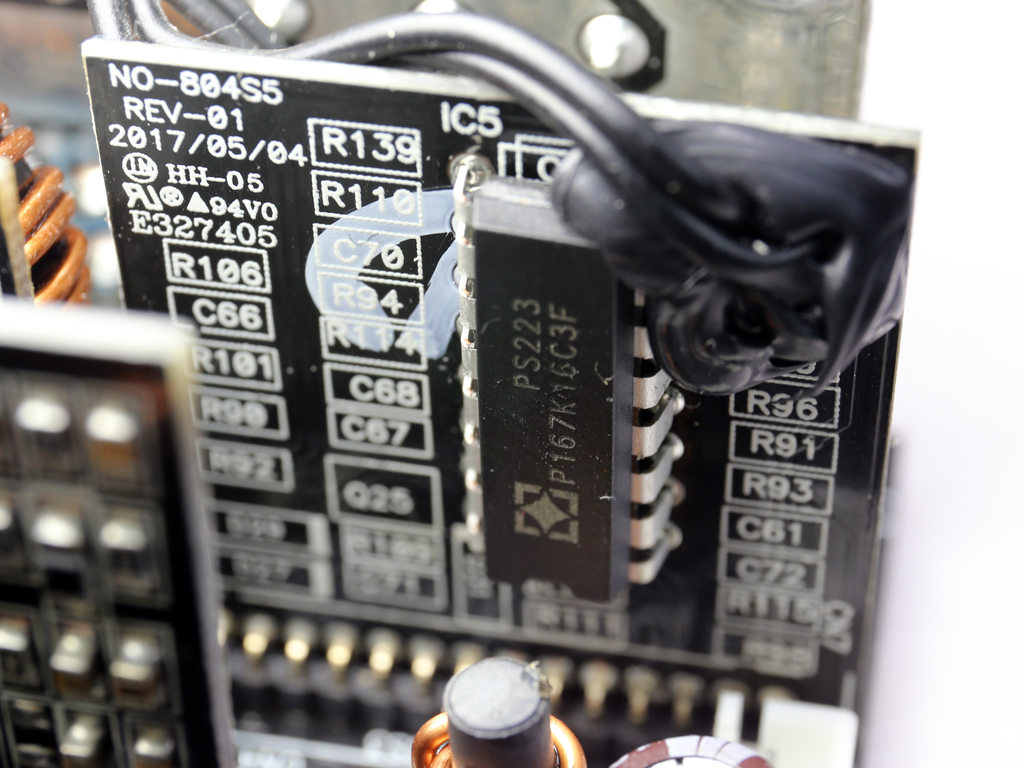be quiet! SFX L Power 600W PSU Review
Why you can trust Tom's Hardware
Teardown & Component Analysis
Parts Description
Before proceeding with this page we strongly encourage you to a look at our PSUs 101 article, which provides valuable information about PSUs and their operation, allowing you to better understand the components we're about to discuss. Our main tools for disassembling PSUs are a Thermaltronics soldering and rework station and a Hakko FR-300 desoldering gun. Finally, for the identification of tiny parts we use an Andonstar HDMI digital microscope.
| General Data | |
|---|---|
| Manufacturer (OEM) | High Power |
| Platform Model | - |
| Primary Side | |
| Transient Filter | 4x Y caps, 2x X caps, 2x CM chokes, 1x MOV, 1x CMD02X |
| Inrush Protection | - |
| Bridge Rectifier | 1x |
| APFC MOSFETs | 2x Toshiba TK16A60W (600V, 15.8A @ 150°C, 0.19Ω) |
| APFC Boost Diode | 1x Infineon IDH06G65C5 (650V, 6A @ 145°C) |
| Hold-up Cap | 1x Rubycon (420V, 470uF, 3000h @ 85°C, USH) |
| Main Switchers | 2x Toshiba TK16A60W (600V, 15.8A @ 150°C, 0.19Ω) Driver IC: ST8233BD |
| APFC Controller | Infineon ICE3PCS01G |
| LLC Resonant Controller | Infineon ICE2HS01G |
| Topology | Primary side: Half-Bridge & LLC Resonant Controller Secondary side: Synchronous Rectification & DC-DC converters |
| Secondary Side | |
| +12V MOSFETs | 6x Infineon BSC027N04LSG (40V, 88A @ 100°C, 2.7mΩ) |
| 5V & 3.3V | DC-DC Converters: 4x Infineon BSC0902NS (30V, 67A @ 100°C, 2.6mΩ) PWM Controller: Anpec APW7159C |
| Filtering Capacitors | Electrolytics: Nippon Chemi-Con (1-5000 @ 105°C, KZE), Nippon Chemi-Con (4-10,000 @ 105°C, KY) Polymers: Nippon Chemi-Con |
| Supervisor IC | SITI PS223 (OVP, UVP, SCP, PG ,OTP) |
| Fan Model | Globe Fan S1201512MB (12V, 0.25A, 120mm, Fluid Dynamic Bearing) |
| 5VSB Circuit | |
| Rectifiers | 2x Infineon 060N03L 1x P10V45SP SBR (45V, 10A) |
| Standby PWM Controller | Sanken STR-A6069H |
| -12V Circuit | |
| Rectifier | KEC KIA7912PI (-12V, 1A) |


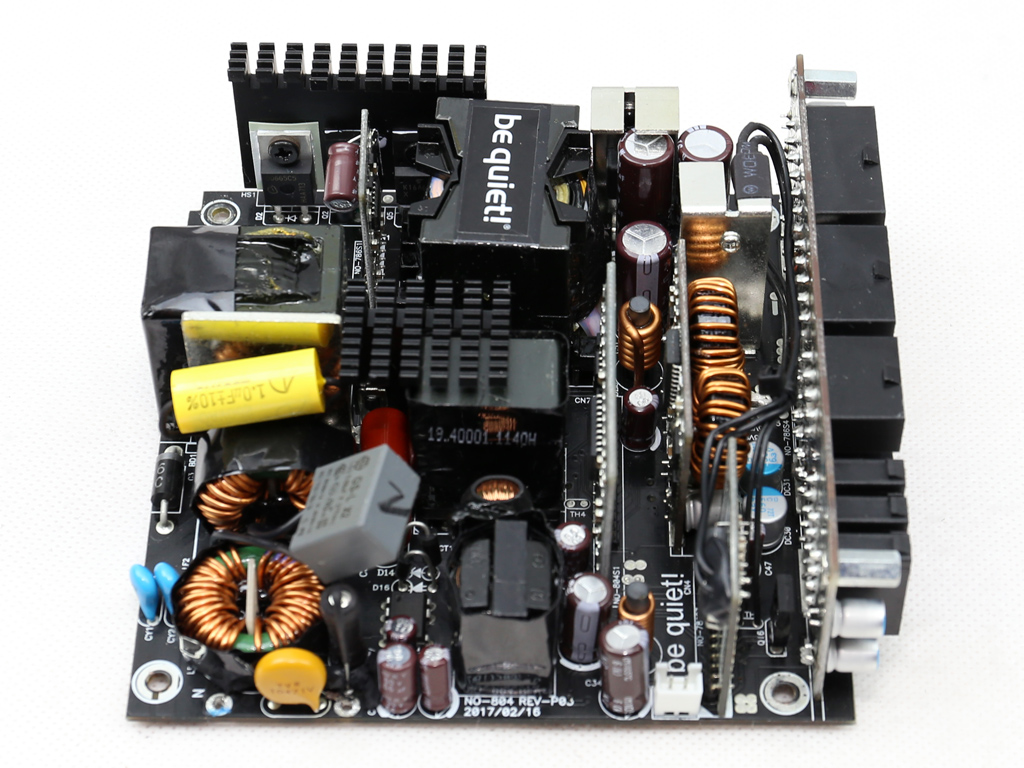
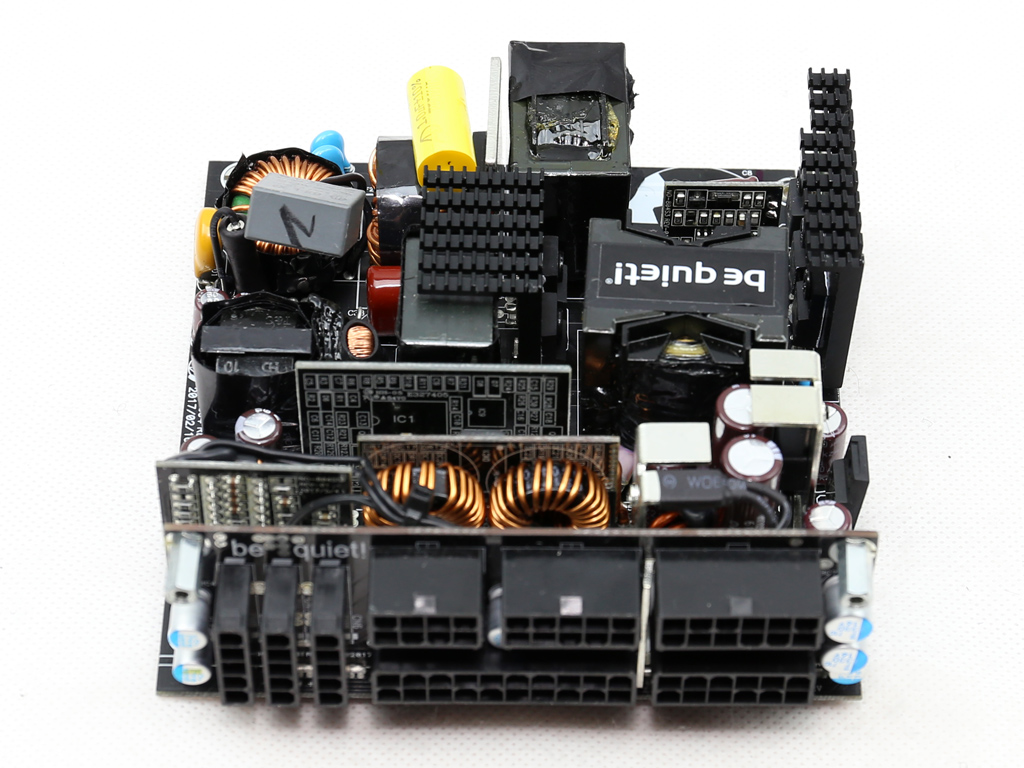

As mentioned, be quiet!'s SFX L units are built by High Power. Their platform is modern: on the primary side, we find a half-bridge topology and LLC resonant converter, which minimizes the switching FETs' losses. On the secondary side, a synchronous rectification scheme is used, while a pair of voltage regulation modules regulate the minor rails. All capacitors are provided by Chemi-Con. Though we like the company's products, many of the caps belong to its lower-quality KZE line. Still, we trust Chemi-Con's specs more than the overly optimistic ones published by most Chinese manufacturers. Besides electrolytic caps (and due to a lack of available space), many polymer capacitors also help out with ripple filtering.
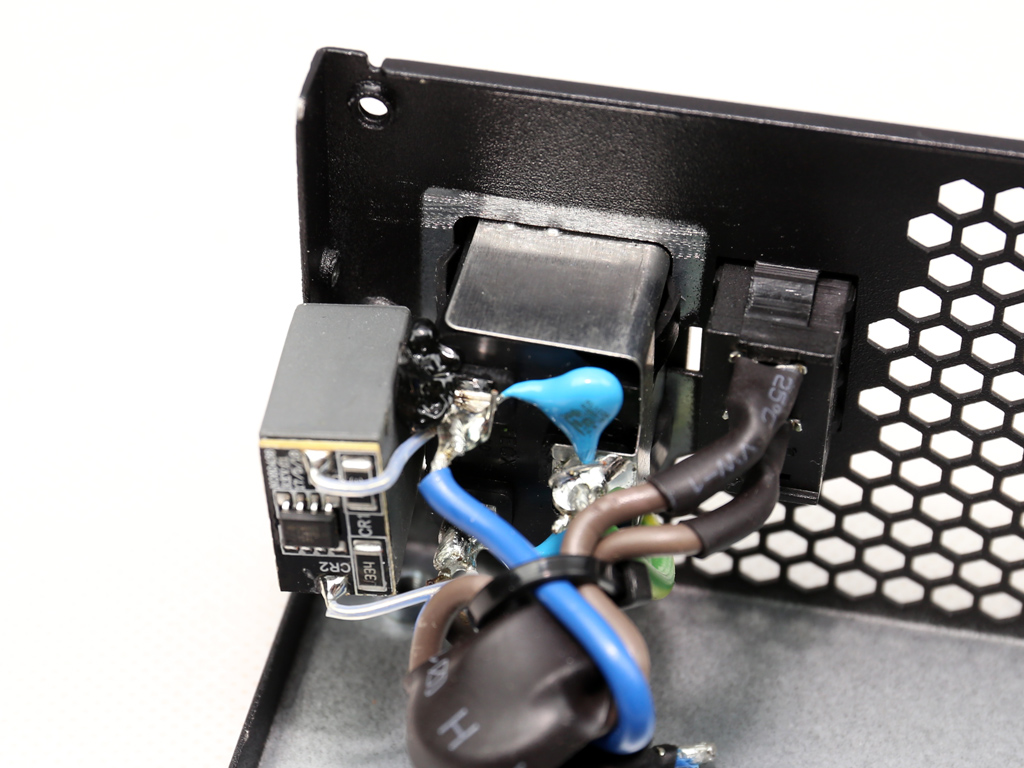

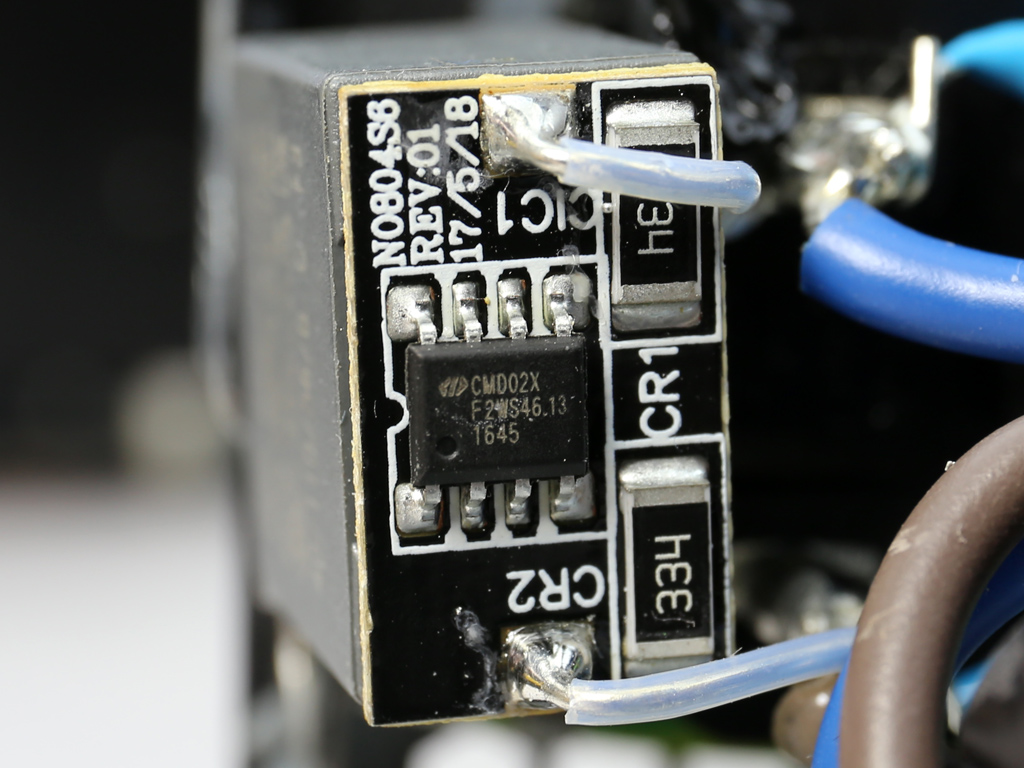
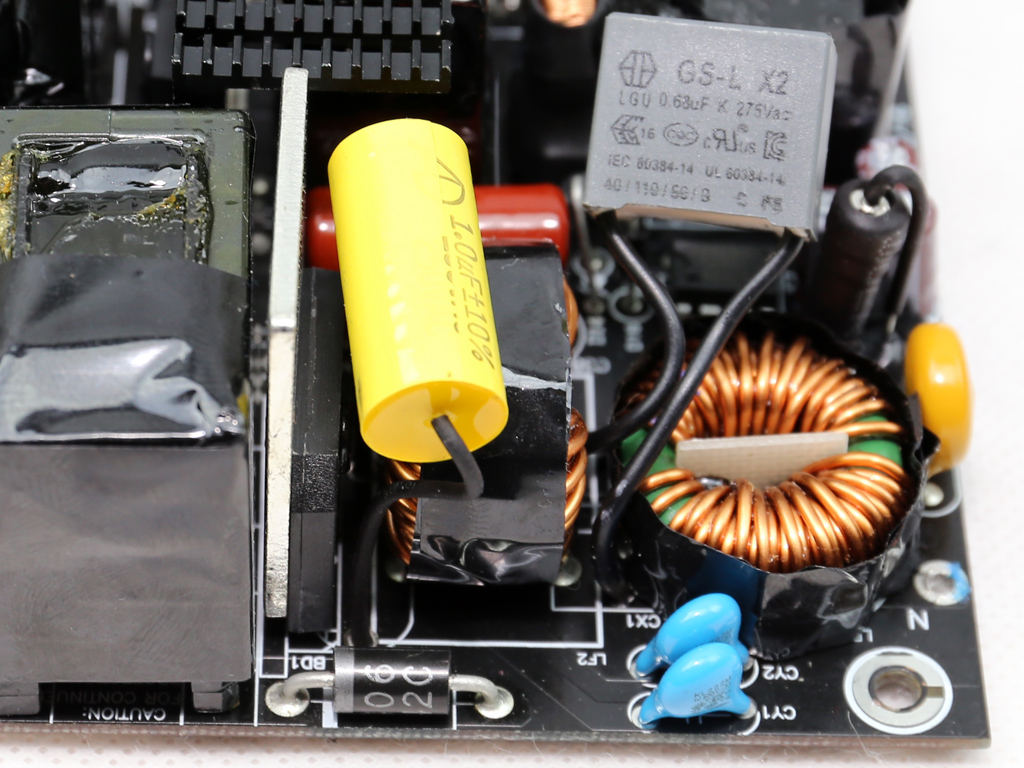

The first part of the EMI filter is on the AC receptacle. As usual, it consists of two Y caps, one X cap, and a CMD02X that blocks current flowing through the pair of discharge SMD resistors, thereby limiting energy losses. The same filter continues on the main PCB with two Y caps and one X one, two CM chokes, and an MOV. To our surprise, we didn't find an NTC thermistor protecting against large inrush currents, meaning this platform will see crazy-high inrush current levels during the start-up phase.
A single bridge rectifier is bolted on a small heat sink. Its markings are hidden.
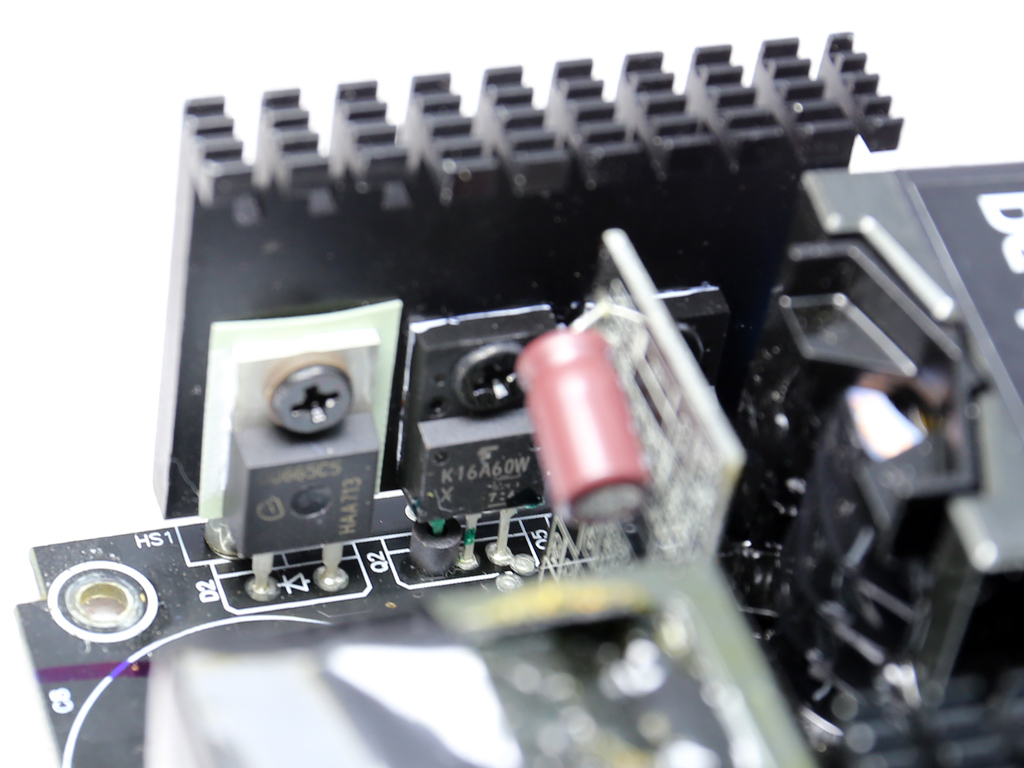

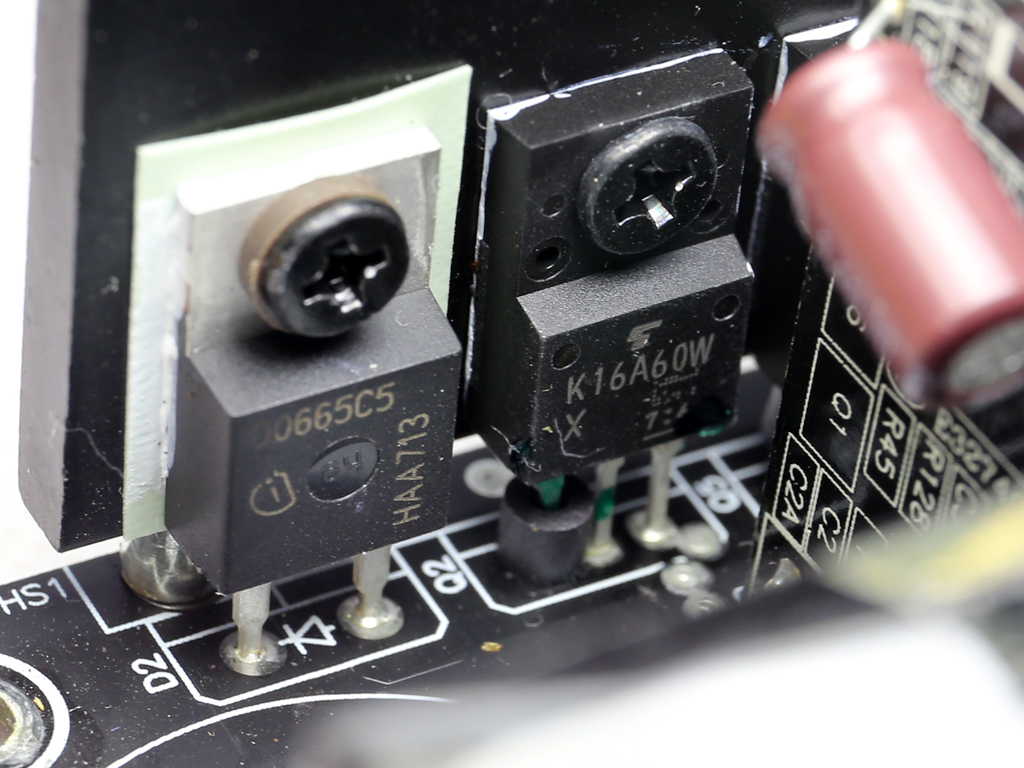
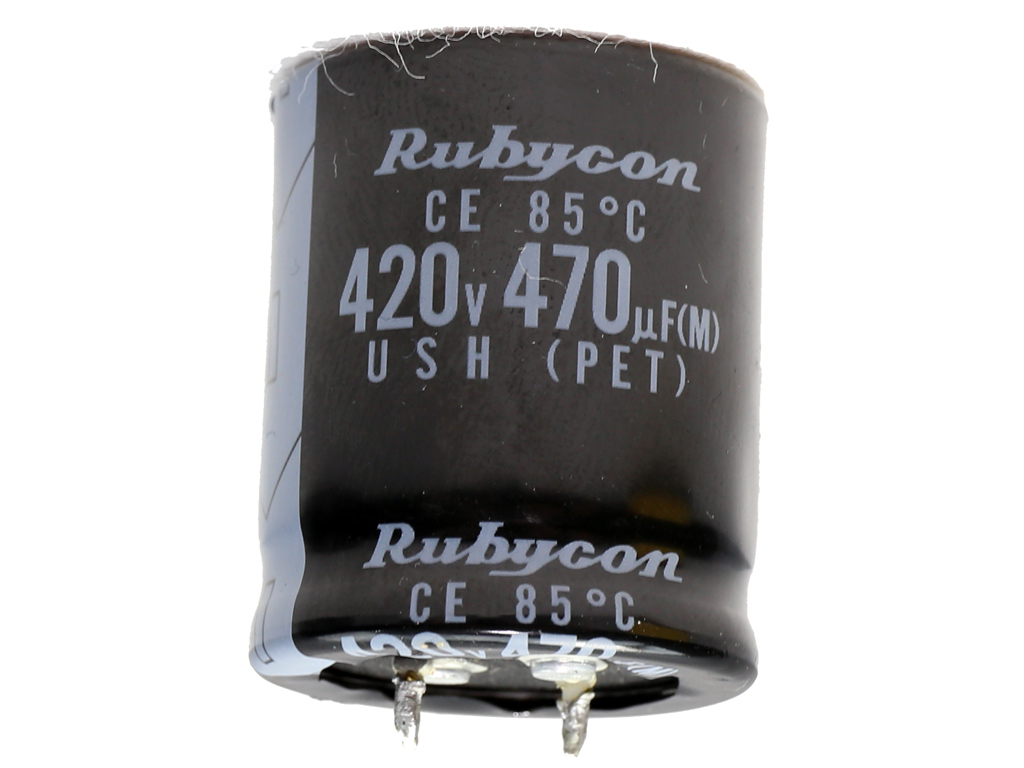
Two Toshiba TK16A60W FETs are used in the APFC converter, along with an Infineon IDH06G65C5 boost diode. A single Rubycon bulk cap has enough capacity to meet the ATX spec's requirements when it comes to hold-up time.
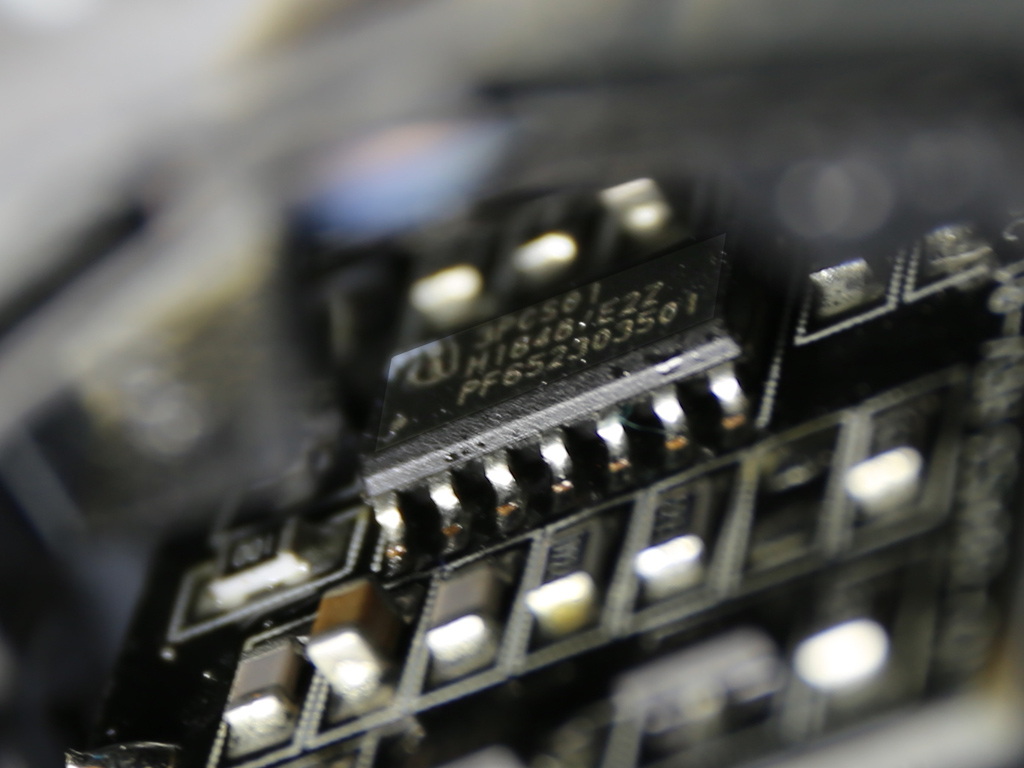
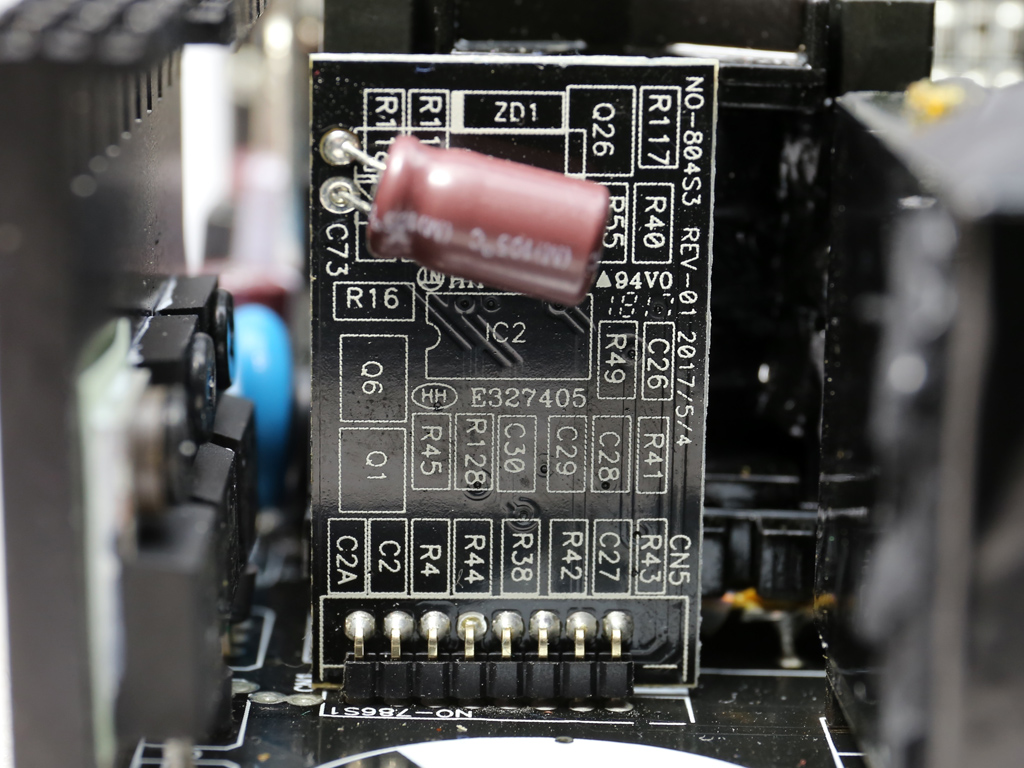
An Infineon ICE3PCS01G serves as the APFC controller.
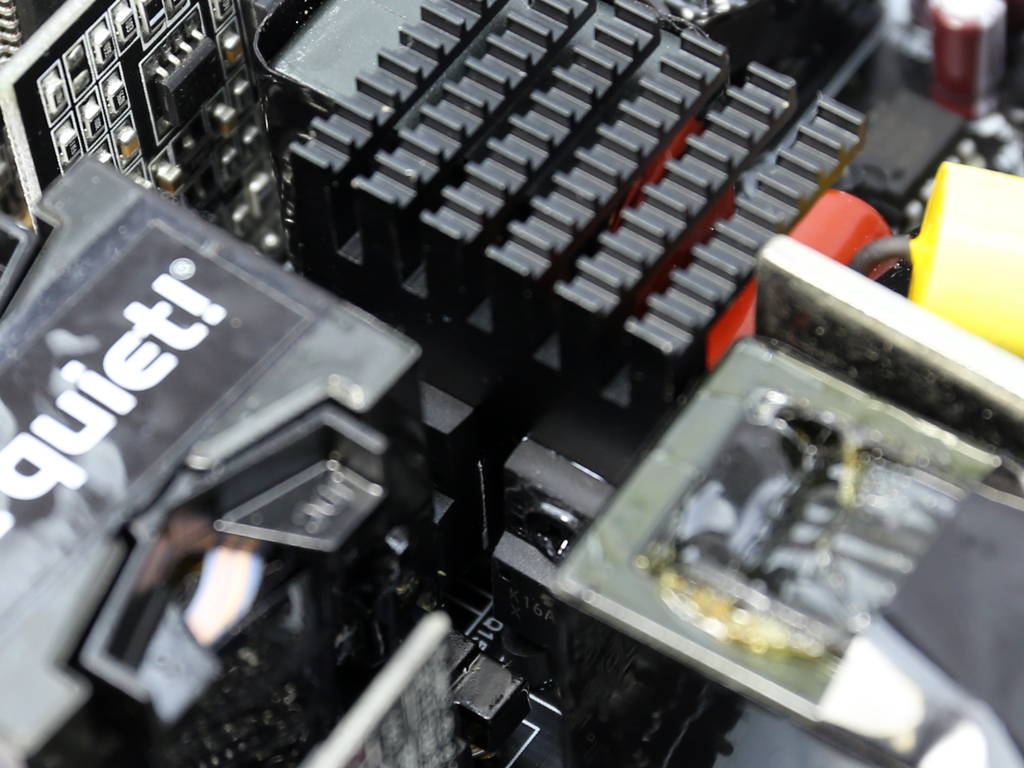


The main switchers are two Toshiba TK16A60Ws. They're configured into a half-bridge topology, and their driver IC is a ST8233BD. An LLC resonant converter is also used to boost efficiency through lower switching losses. Both main switching FETs are bolted onto a dedicated heat sink.
Get Tom's Hardware's best news and in-depth reviews, straight to your inbox.
The LLC resonant controller is an Infineon ICE2HS01G.
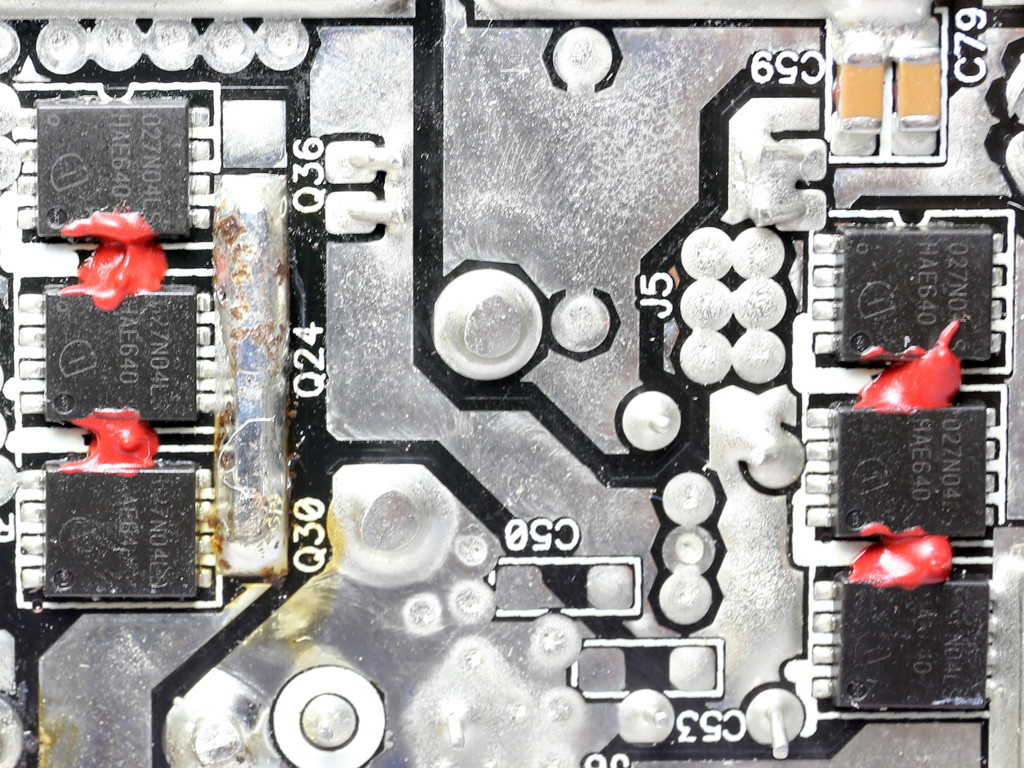
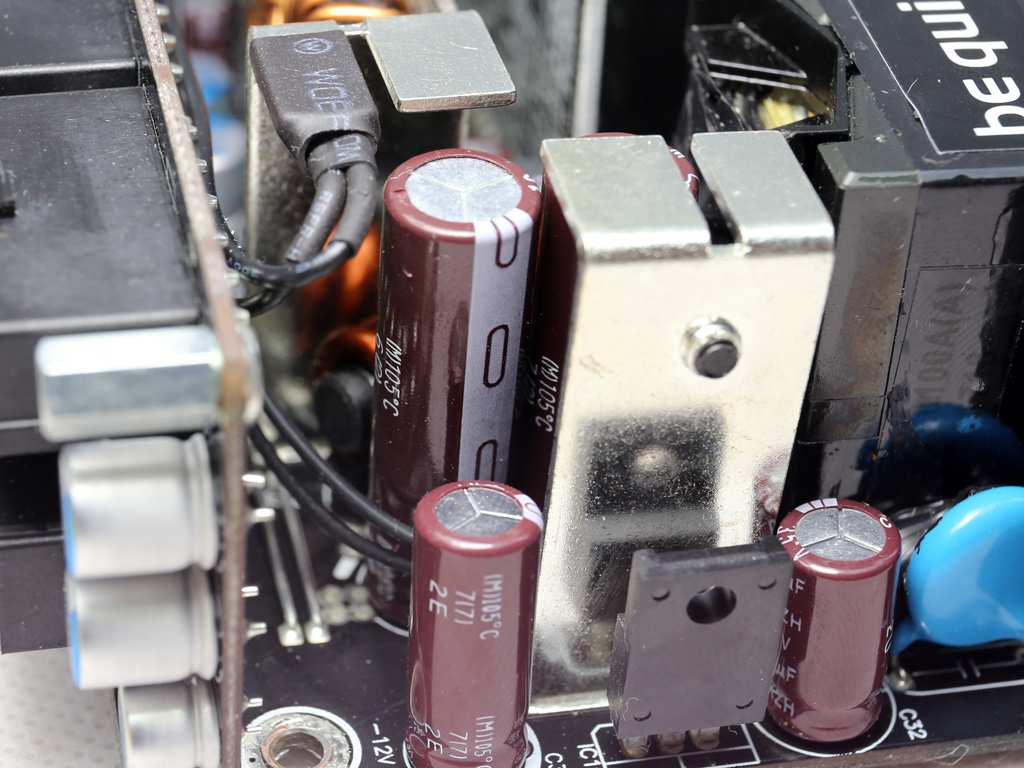
We find six Infineon BSC027N04LSGs regulating the +12V rail. Two heat sinks, installed on the business (top) side of the main PCB cool those FETs. It is really strange that High Power didn't use the main chassis to help keep the FETs cool. It the company had, we believe its fan profile could have been relaxed even more.
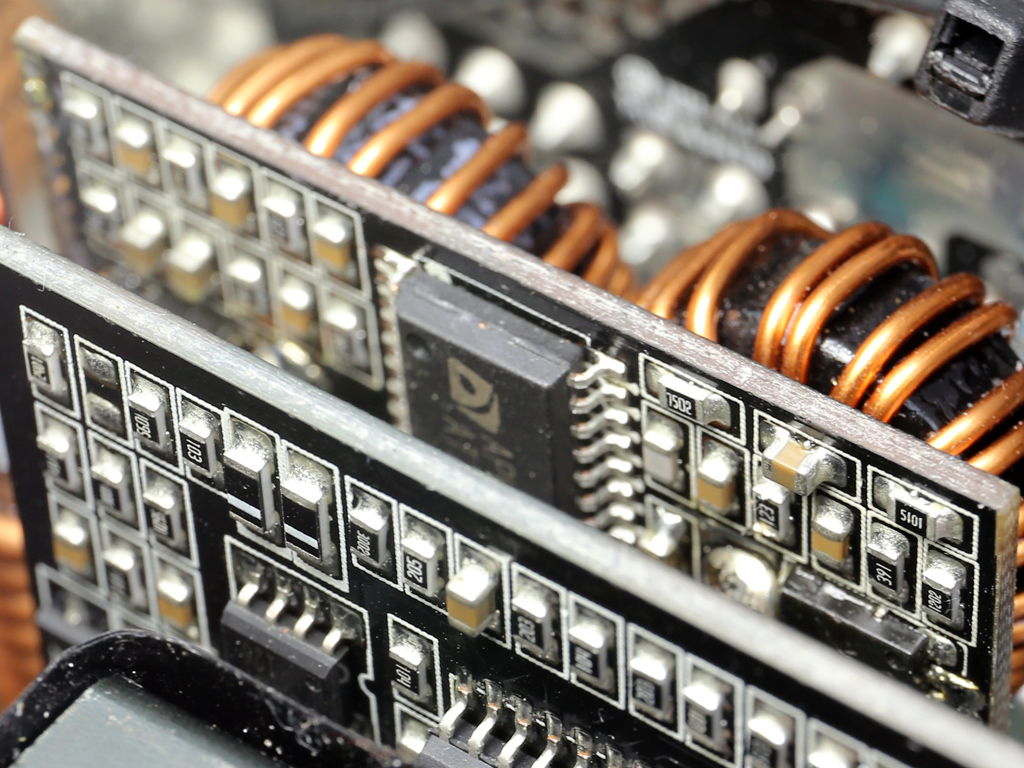

Two VRMs that handle the minor rails are installed onto a small daughterboard. In total, six Infineon BSC027N04LSG FETs are used by those VRMs. The single PWM controller is an Anpec APW7159C.
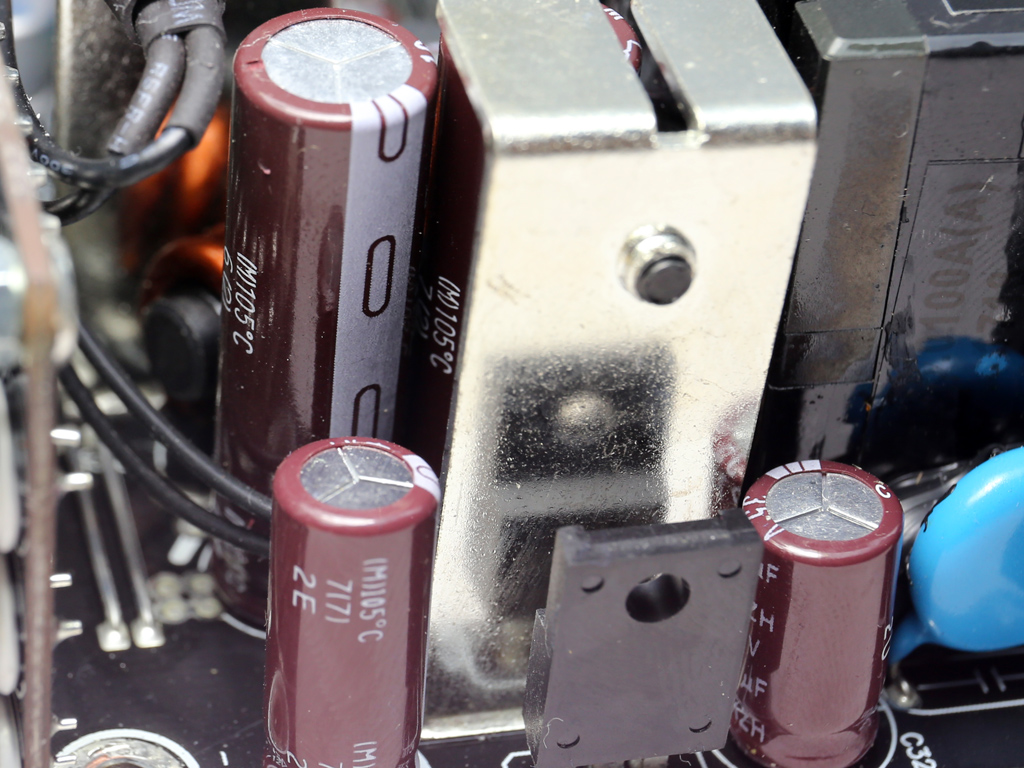
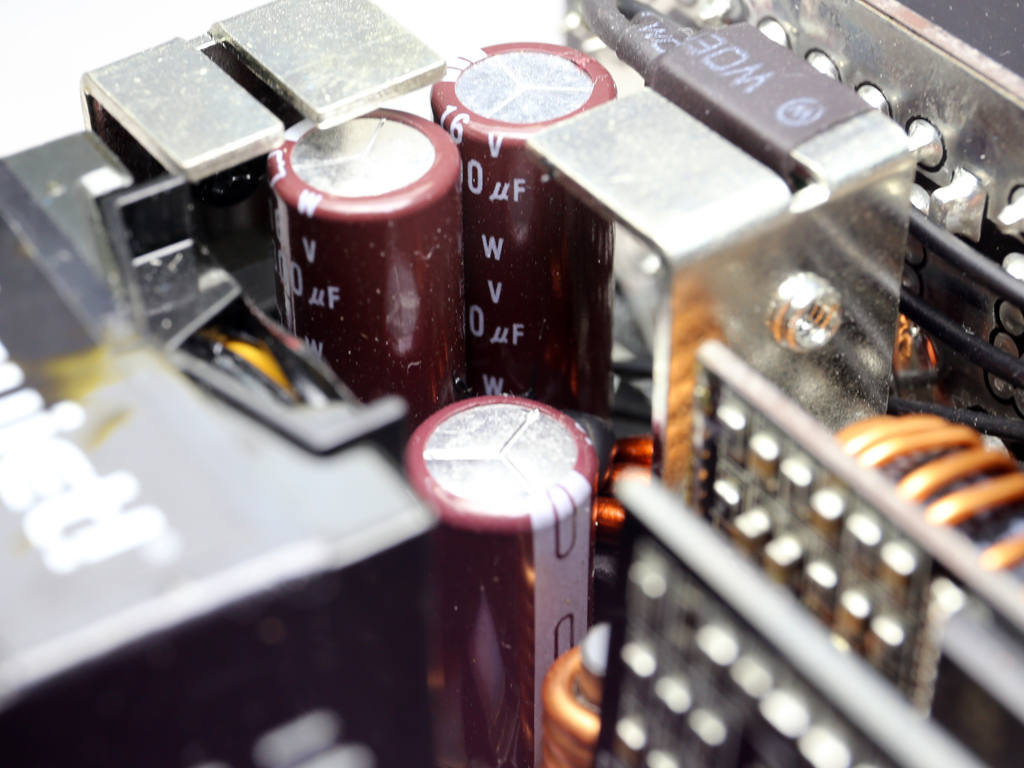

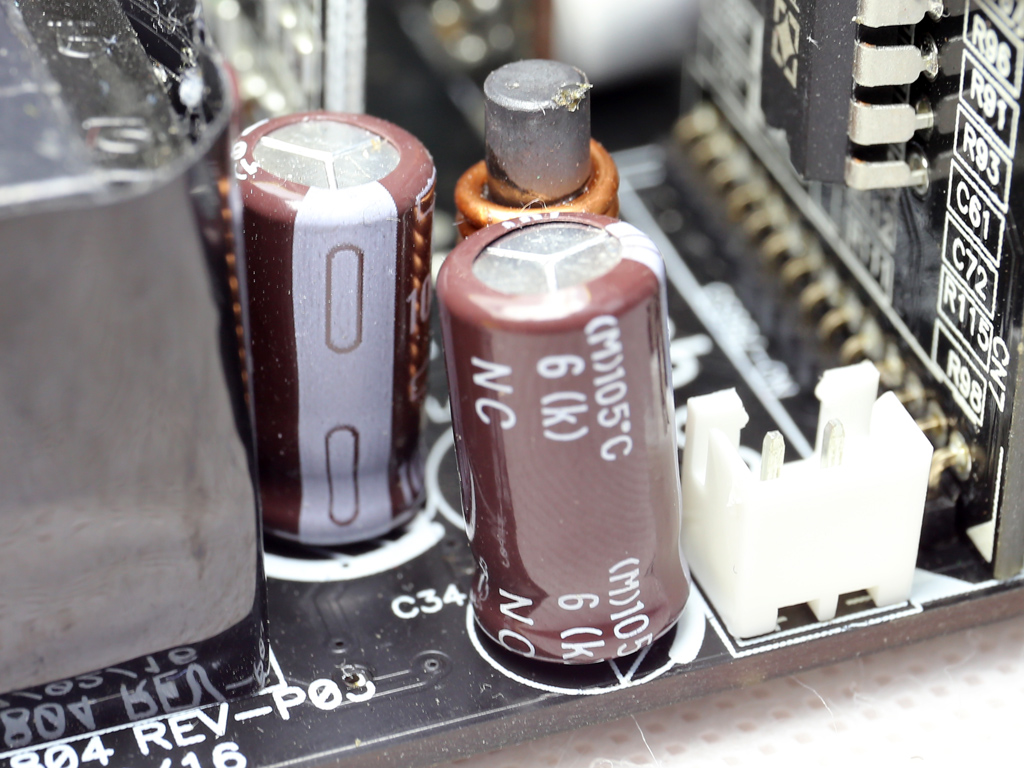

The filtering caps are provided by Chemi-Con. They belong to the budget-oriented KZE line and the higher-quality KY family, which offers notably more lifetime. Besides electrolytic capacitors, a number of polymer ones are also used. The good thing about polymer caps is that they are much more resilient to heat, since they don't contain liquid electrolyte susceptible to evaporating quickly under stressful conditions.
The protections IC is a SITI PS223, which is one of the few offering over-temperature protection out of the box.
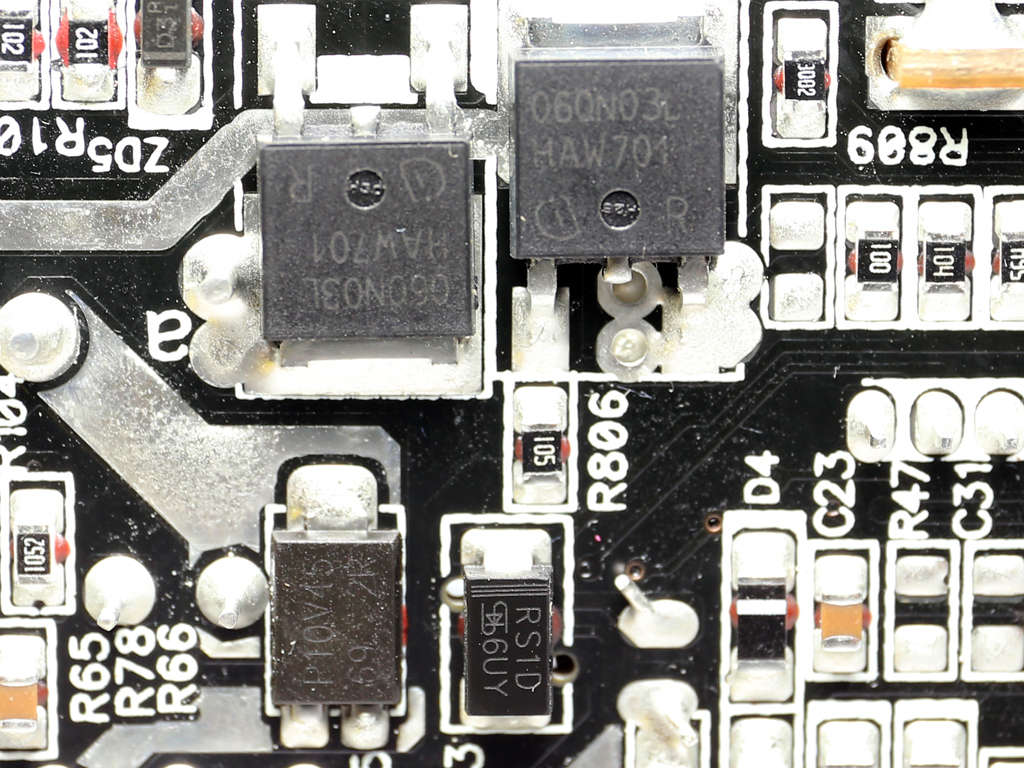

On the solder side of the PCB, we find two Infineon 060N03Ls and a single P10V45SP SBR. One of the Infineon FETs is the 5VSB rail's main switcher, while the P10V45SP is the rectifier. The second 060N03L is probably used to switch the 5VSB rail to the 5V one when the PSU is operating, though we can't be sure without a schematic. Finally, the standby PWM controller is a Sanken STR-A6069H.
The -12V rail's rectifier is a KEC KIA7912PI, installed close to one of the 12V heat sinks.

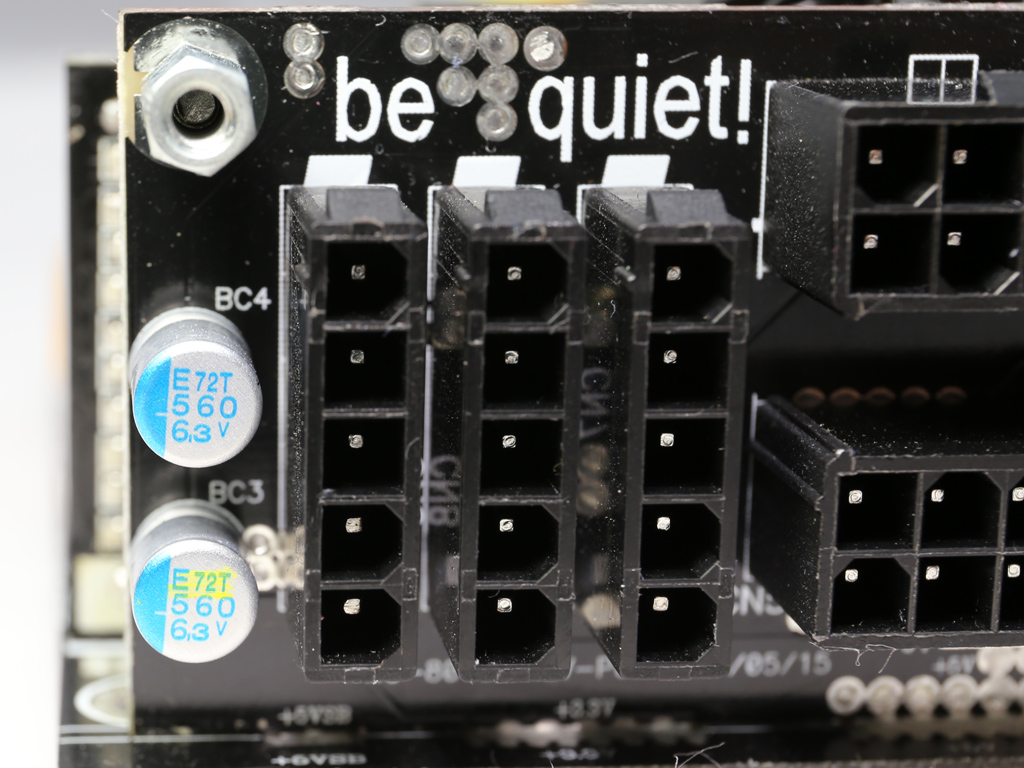

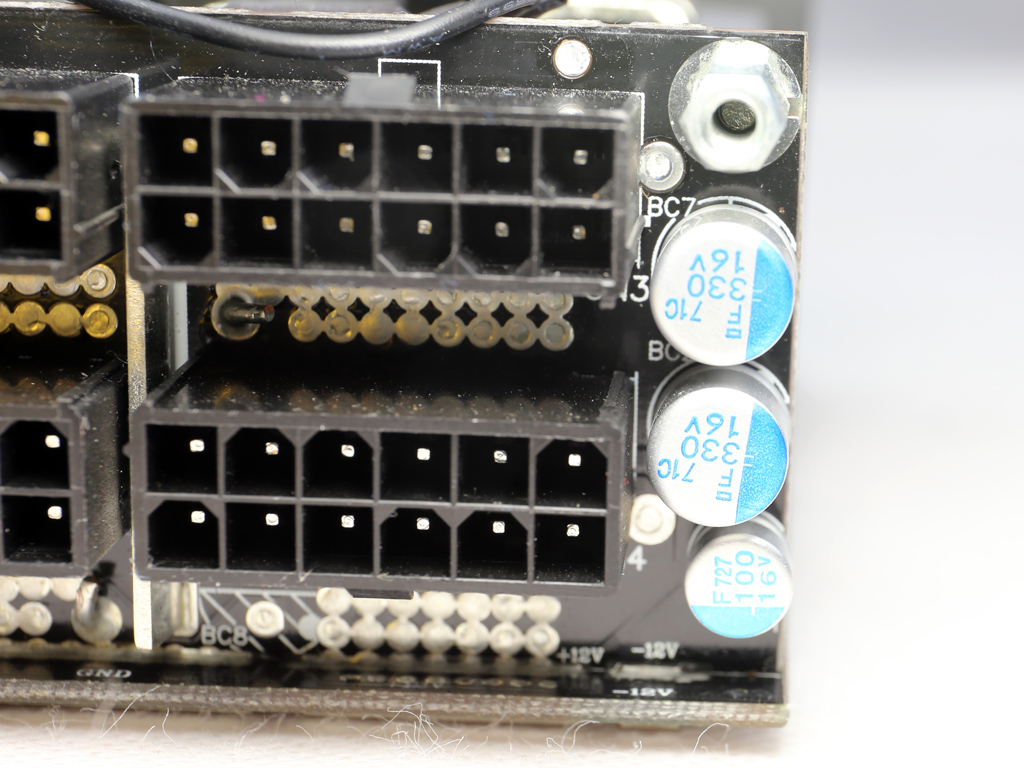
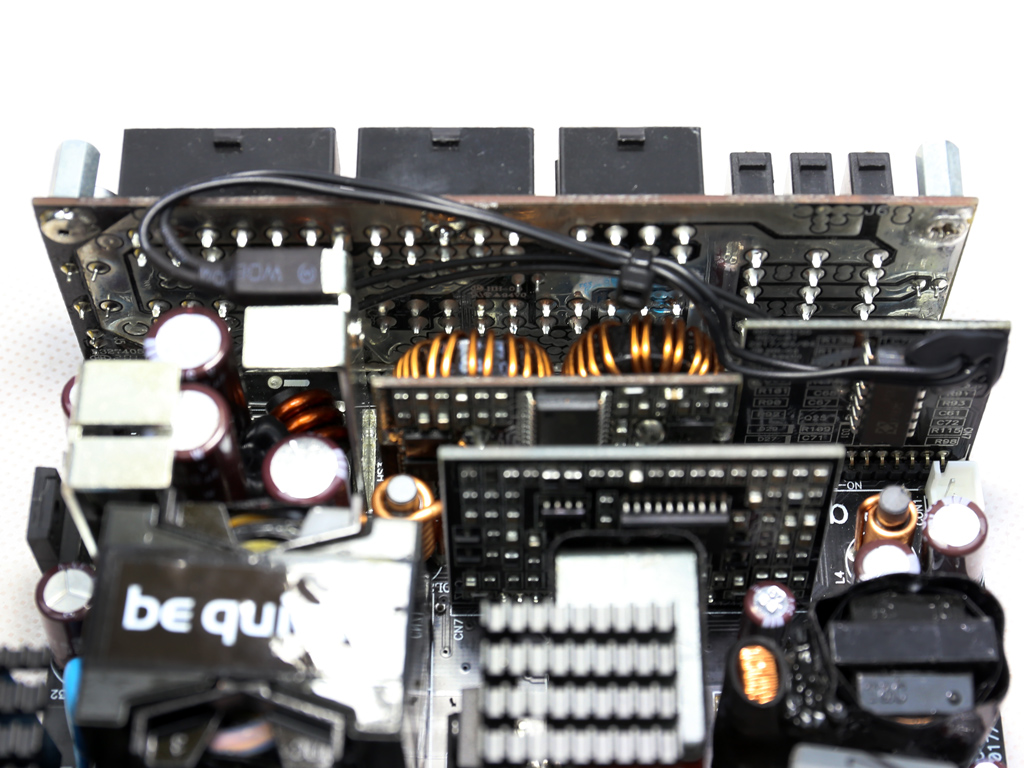
Six Chemi-Con polymer caps used for ripple filtering are installed on the modular board's front side.
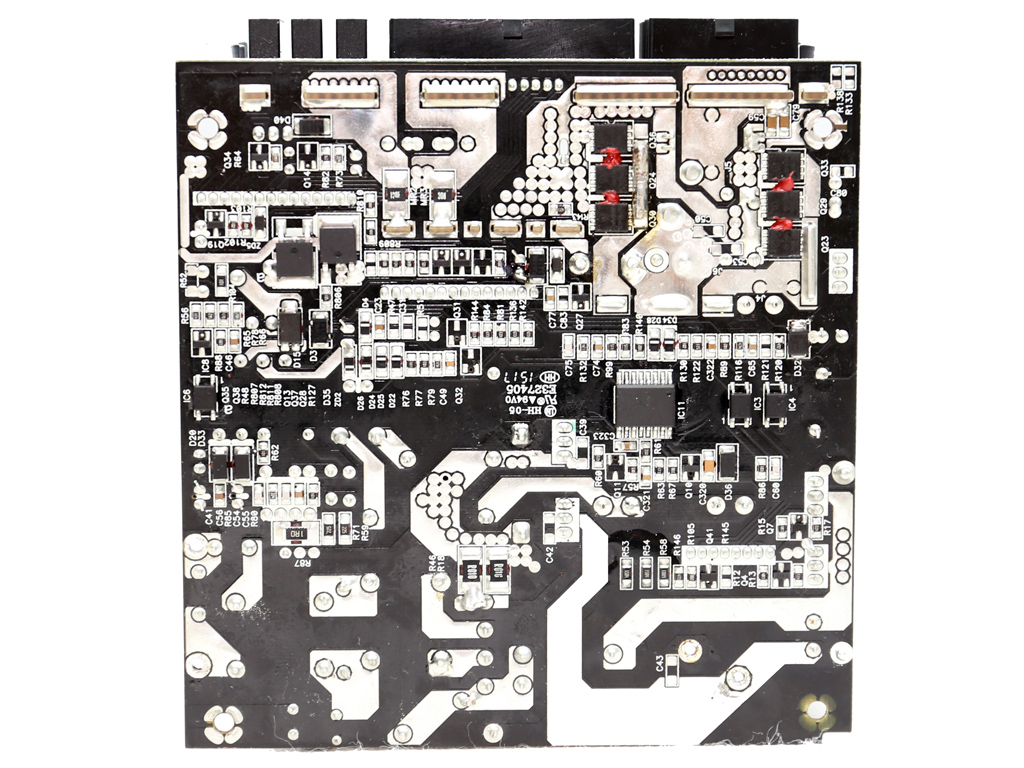

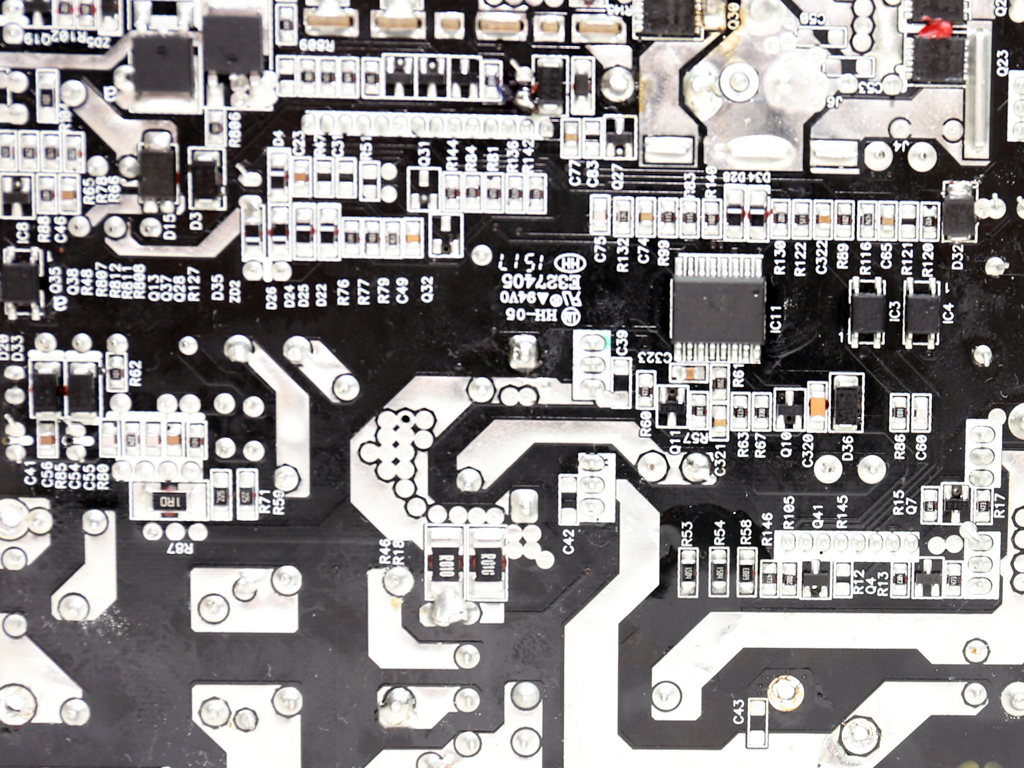
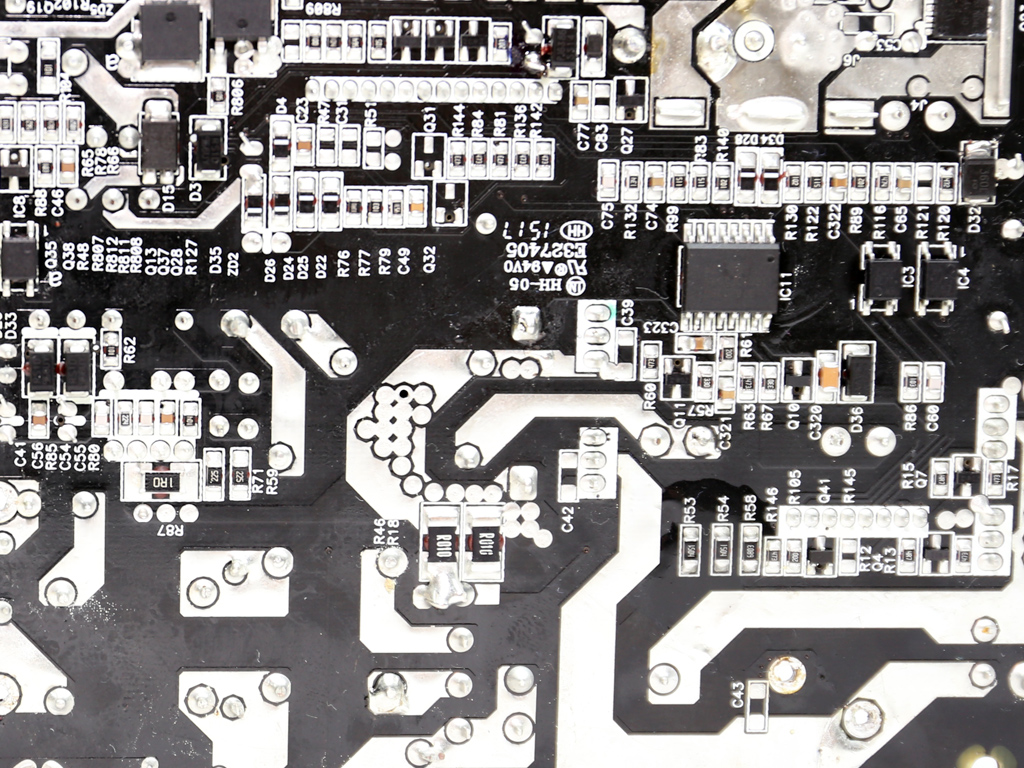
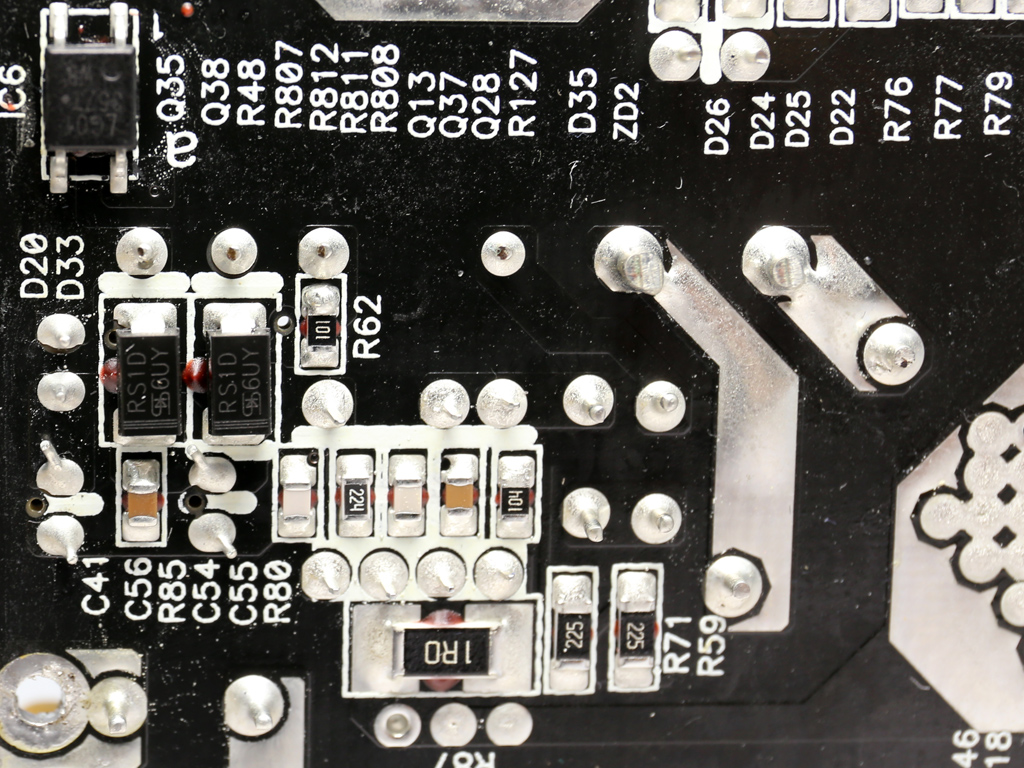

High Power's soldering quality is decent overall.

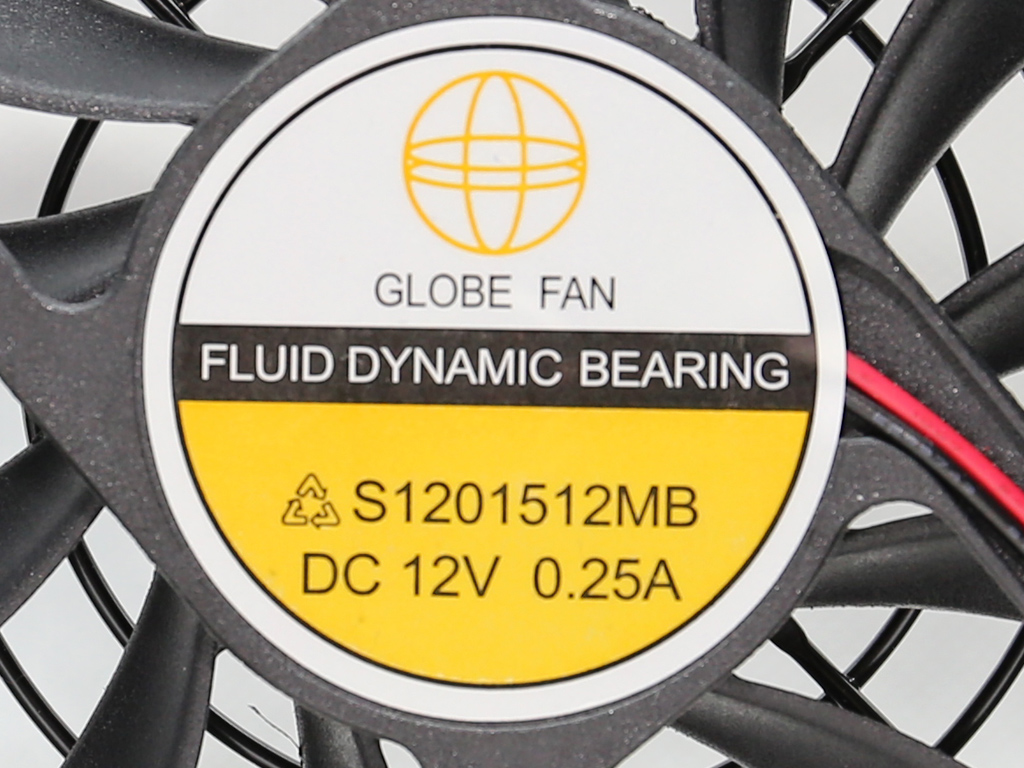
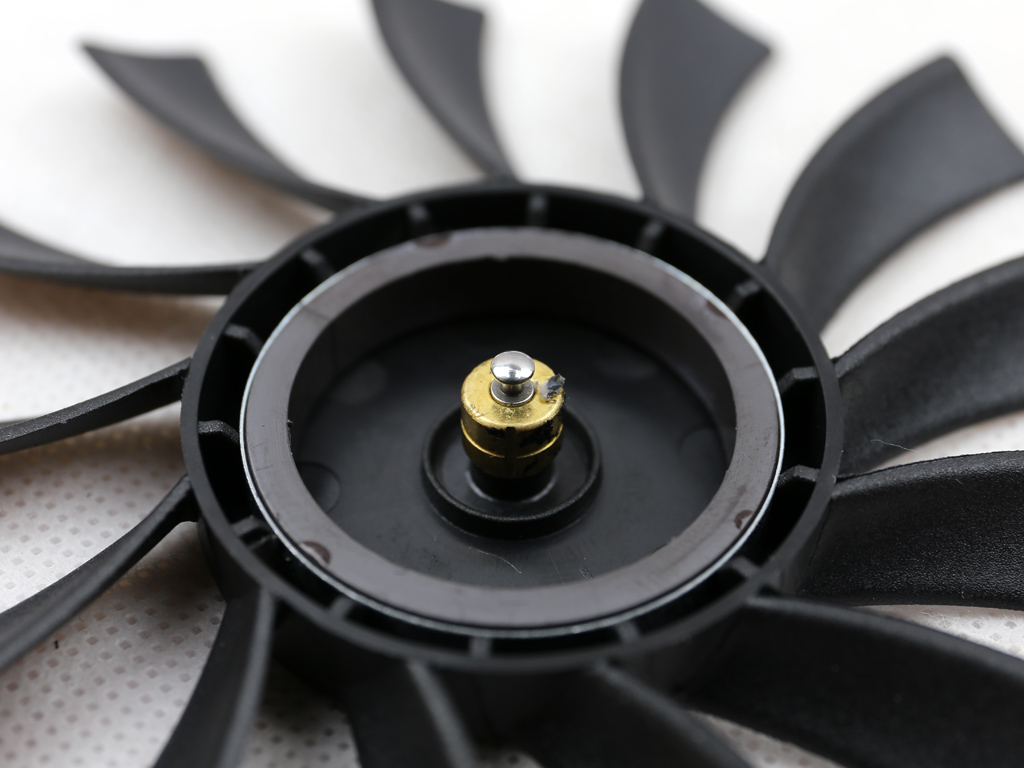
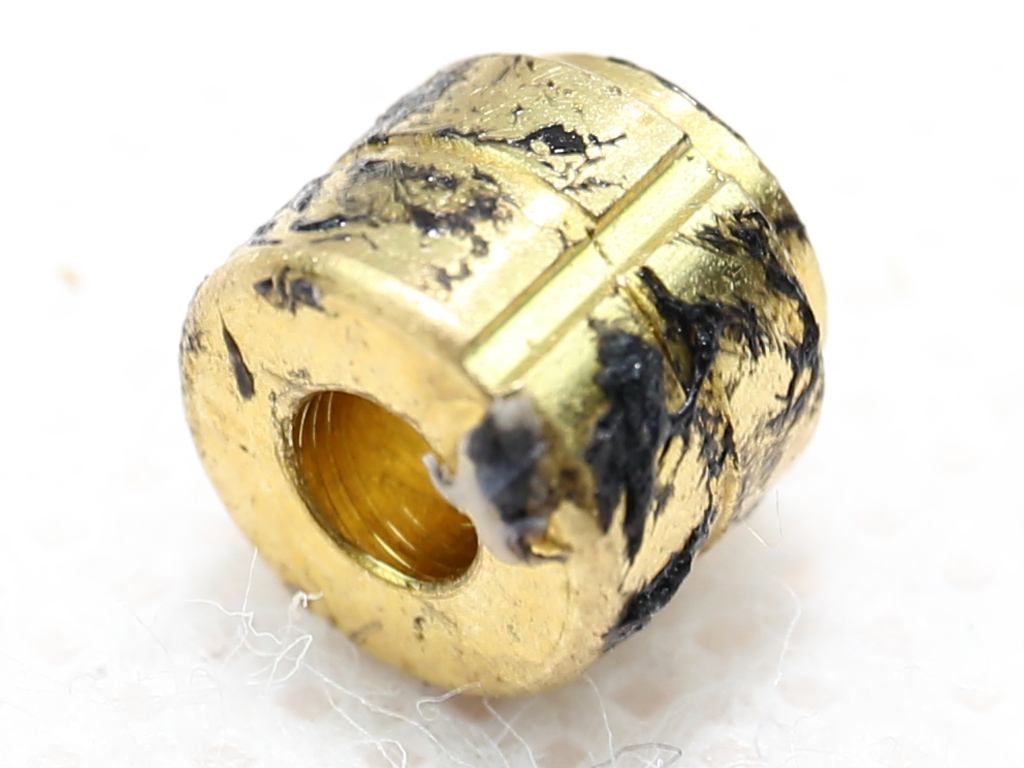

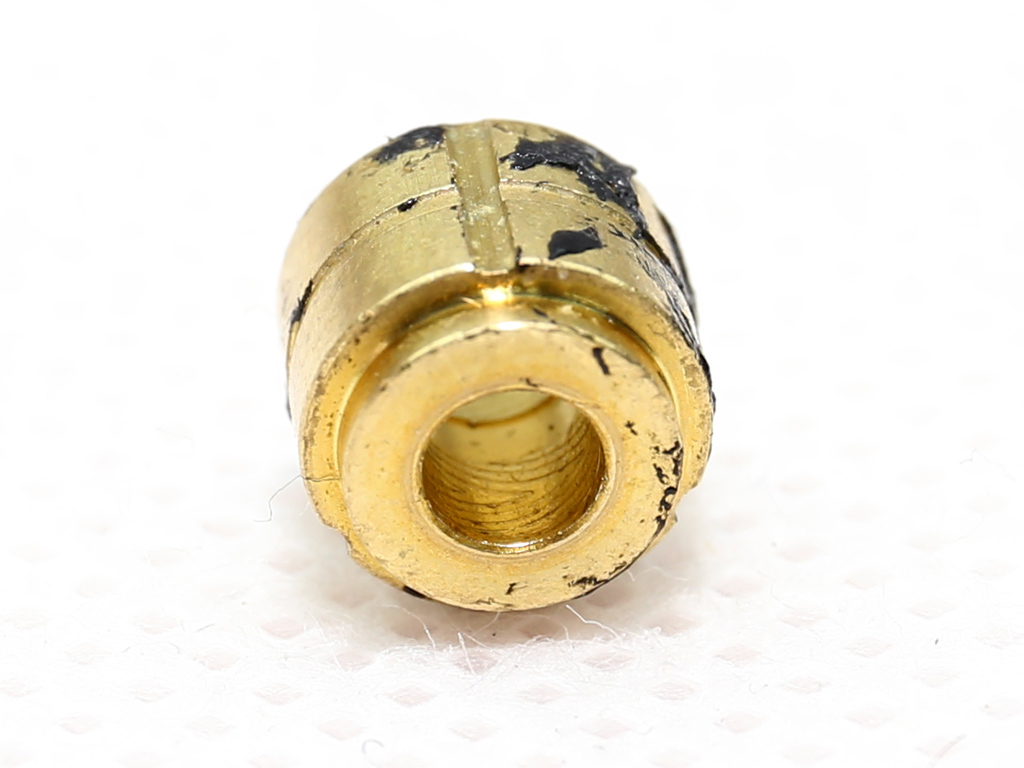
The cooling fan has a sticker that says Fluid Dynamic Bearing. Its model number is S1201512MB (12V, 0.25A, 120mm), and it is provided by Globe Fan. We broke the fan apart to confirm its FDB bearing, only to discover a single seal (gasket) instead of the two we'd expect covering both of the bearings' sides. It's safe to assume the lubricant will evaporate sooner than in a higher-quality FDB fan.
MORE: Best Power Supplies
MORE: How We Test Power Supplies
MORE: All Power Supply Content
Current page: Teardown & Component Analysis
Prev Page Packaging, Contents, Exterior & Cabling Next Page Load Regulation, Hold-Up Time & Inrush Current
Aris Mpitziopoulos is a contributing editor at Tom's Hardware, covering PSUs.
-
Aris_Mp The SF600 has higher performance. This is shown in the relative performance chart. However in the overall noise score the SF600 is much higher as well, because its fan profile gets highly aggressive once you load its minor rails. In real life conditions where the minor rails are lightly used, it is quite silent.Reply -
expert_vision You know what baffles me? How is it possible that no monitoring is offered in today PSUs ? I used to have a HighPower PSU 10 years ago that had a simple 7 segment display, showing instantaneous power draw in watts, and a 3 header pin for FAN RPM. You'd think by today that would be standard. But no, instead they put freaking RGB in everything ...Reply -
below I had bought one of them a few weeks ago and after installing in bitfenix portal case it has start to randomly make noises. I had rebuild my block two times just to make sure that there is nothing except PSU fan itself making that noise. The noise is comparably with very old HDD's or even Floppy crunching, its super annoying and only appears in PSU working state (when fan at the bottom) and mostly on high load, also noise could be very loudReply
Also I have found some review on Spanish (I think) from amazon about this PSU and customer have exactly the same issue, so looks like it could be design problem.
This PSU is a winner of most comparisons an reviews everywhere and I very dissapointed that none of reviewers couldn't find such awfull issue for quiet PSU.
Also it should be a shame for company named 'be quiet' that it's 'silent wings' in that PSU making that horrible noises.

